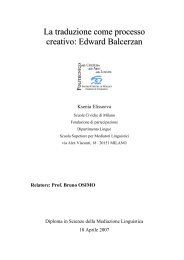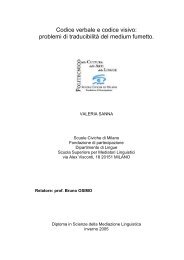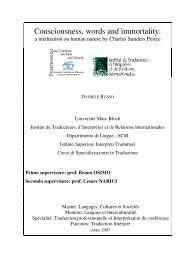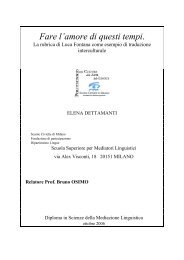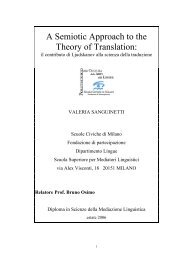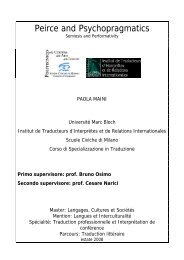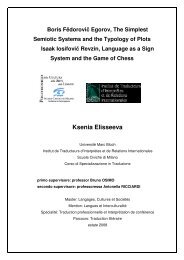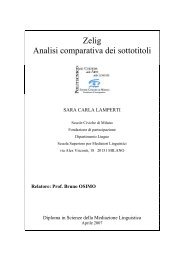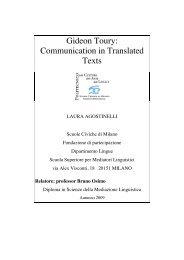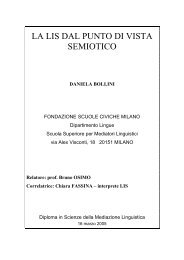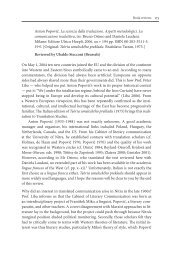Relatore: Professor Bruno OSIMO - Bruno Osimo, traduzioni ...
Relatore: Professor Bruno OSIMO - Bruno Osimo, traduzioni ...
Relatore: Professor Bruno OSIMO - Bruno Osimo, traduzioni ...
You also want an ePaper? Increase the reach of your titles
YUMPU automatically turns print PDFs into web optimized ePapers that Google loves.
There can be different reasons to study problem-solving processes. For<br />
example, a psychologist may want to investigate what mechanisms underlie<br />
human reasoning, what causes errors, the character and origin of people’s<br />
different performances. An educational scientist may be interested in the effect<br />
of education or in children’s difficulties in solving exercise problems. A<br />
knowledge engineer may want to analyze how a subject carries out a task, in<br />
order to try to build a computer system that can do the same. The aim the<br />
researcher may have partly determines the nature of the procedure he follows<br />
when using protocol analysis for collecting data about the cognitive process<br />
(Someren, Barnard and Sandberg 1994).<br />
2. METHODS OF DATA COLLECTION<br />
One class of methods of data collection on the problem-solving process is<br />
based on observation of problem-solving behavior. The first one, product<br />
analysis, uses the results of problem solving: the solution to a problem may<br />
reveal aspects of the problem-solving behavior. It is possible to obtain further<br />
information by observing the problem-solving behavior concurrently while it<br />
takes place.<br />
Besides simple observation of results and behavior during problem<br />
solving, properties that are not directly visible or audible may be examined by<br />
using special equipment: researchers may register eye movements during<br />
problem solving or even measure activity in various parts of the brain by<br />
special techniques, which may provide data on what information is being<br />
focused on and processed at a certain moment.<br />
Behavioral observations are registered as action protocols. One of the few<br />
techniques that give access to data about the problem-solving process is<br />
storing a behavior trace if a person manipulates objects during problem<br />
solving (for example when using a computer).<br />
Another class of techniques used both in psychology and in knowledge<br />
acquisition, is based on predefined forms in which the subject should express<br />
his knowledge. According to the task and the purpose of the research, it is<br />
possible to use an infinite variety of formats. One of them are questions with<br />
7



